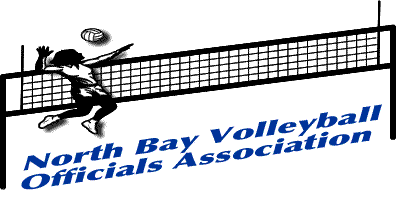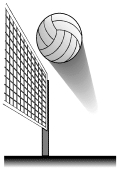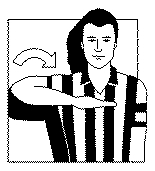
| Home |
| About |
| Schedules |
| Officials Access |
| Coaches Access |
| Education |
| Forms |
| Leagues & Schools |
| Links |
 |
Other Calls During Play
| Illegal Hits | Other contact with the ball like passes or bumps should not be PROLONGED. The ball should bounce off player’s fists or arms, like a ball hitting the floor. If it does not, an illegal hit (lift) should be called. |
| Multiple Contacts | Multiple contacts by a player are allowed:
|
Over-the-Net Fouls
|
Over-the-net fouls usually occur either by:
The first thing to judge in such situations is where the ball is. In all cases — and this can simplify a lot of calls — If the ball is in the plane of the net, either team can hit it. +A ball in the plane of the net is in THE “neutral zone.” The attack is considered complete when:
This final situation is often missed by inexperienced officials. For some reason they want to reward the team that has just shanked the ball and penalize an aggressive blocker feeding on some easy prey. +Remember, it’s OK to reach over on a block, even after a first hit, and put a ball away, but just be darn sure that nobody on the attacking team would have gotten to it. One final note on over-the-net fouls. The ball must be contacted on the other side of the net to be a foul. No contact, no foul, regardless of the intention. Example: If the ball is completely on one side of the net, the ball “belongs” to that team. The attacking team has the right to play the ball while it is completely on their side of the net without any contact from the defensive team. See exception. It is an over-the-net foul if a set completely crosses the plane of the net and an attacker reaches over the net and makes contact with the ball. It is an over-the-net foul if a defensive player reaches completely over the net and contacts a ball being played by the attacking team. See exception. +An opponent cannot block a set which does not enter the plane of the net. Exception: Blocking the ball over the opponent’s side of the net is legal if the ball has been attacked. |
DataBase Management Services
